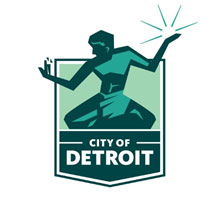| Outcome | Not compliant |
4 violations cited :
Code 3-501.17
In house prepared ready-to-eat potentially hazardous food(s) without date of consumption marking
FULL FOOD CODE:
(A) READY-TO-EAT, POTENTIALLY HAZARDOUS FOOD (TIME/TEMPERATURE CONTROL FOR SAFETY FOOD) prepared and held refrigerated for more than 24 hours in a FOOD ESTABLISHMENT shall be clearly marked at the time of preparation to indicate the date or day by which the FOOD shall be consumed. (Pf) (B) A container of refrigerated, commercially prepared READY-TO-EAT POTENTIALLY HAZARDOUS FOOD (TIME/TEMPERATURE CONTROL FOR SAFETY FOOD) shall be clearly marked, at the time the original container is opened in a FOOD ESTABLISHMENT, to indicate the date or day by which the FOOD shall be consumed. (Pf) A date marking system that does not exceed 7 days, including date of preparation, or opening is to be used. (Pf)
(A) READY-TO-EAT, POTENTIALLY HAZARDOUS FOOD (TIME/TEMPERATURE CONTROL FOR SAFETY FOOD) prepared and held refrigerated for more than 24 hours in a FOOD ESTABLISHMENT shall be clearly marked at the time of preparation to indicate the date or day by which the FOOD shall be consumed. (Pf) (B) A container of refrigerated, commercially prepared READY-TO-EAT POTENTIALLY HAZARDOUS FOOD (TIME/TEMPERATURE CONTROL FOR SAFETY FOOD) shall be clearly marked, at the time the original container is opened in a FOOD ESTABLISHMENT, to indicate the date or day by which the FOOD shall be consumed. (Pf) A date marking system that does not exceed 7 days, including date of preparation, or opening is to be used. (Pf)
Priority Foundation
Corrected on 12-16-2025
Code 3-303.12
Unpackaged food(s) used as a cooling medium
FULL FOOD CODE:
PACKAGED FOOD may not be stored in direct contact with ice or water, except as allowed by LAW.
PACKAGED FOOD may not be stored in direct contact with ice or water, except as allowed by LAW.
Core
Not corrected
Code MFL289.2129
Person-in-charge missing
FULL FOOD CODE:
Sec. 2129. (1) All food establishments shall employ a minimum of 1 managerial employee as a food safety manager, who must be an individual who is currently certified under a personnel certification program accredited by the American National Standards Institute, utilizing the Conference for Food Protection standards: (2) Beginning January 14, 2017 and every 5 years thereafter, a certified food safety manager who supervises the operations of a food service establishment shall have completed a food safety training program containing an allergen awareness component that has been approved by the department. A food service establishment shall retain records on the site of the food service establishment documenting compliance of its certified food safety managers with this subsection.
Sec. 2129. (1) All food establishments shall employ a minimum of 1 managerial employee as a food safety manager, who must be an individual who is currently certified under a personnel certification program accredited by the American National Standards Institute, utilizing the Conference for Food Protection standards: (2) Beginning January 14, 2017 and every 5 years thereafter, a certified food safety manager who supervises the operations of a food service establishment shall have completed a food safety training program containing an allergen awareness component that has been approved by the department. A food service establishment shall retain records on the site of the food service establishment documenting compliance of its certified food safety managers with this subsection.
Core
Not corrected
Code 4-601.11
Food-contact surface(s) soiled
FULL FOOD CODE:
(A) EQUIPMENT FOOD-CONTACT SURFACES and UTENSILS shall be clean to sight and touch. (Pf) (B) The FOOD-CONTACT SURFACES of cooking EQUIPMENT and pans shall be kept free of encrusted grease deposits and other soil accumulations. (C) NonFOOD-CONTACT SURFACES of EQUIPMENT shall be kept free of an accumulation of dust, dirt, FOOD residue, and other debris.
(A) EQUIPMENT FOOD-CONTACT SURFACES and UTENSILS shall be clean to sight and touch. (Pf) (B) The FOOD-CONTACT SURFACES of cooking EQUIPMENT and pans shall be kept free of encrusted grease deposits and other soil accumulations. (C) NonFOOD-CONTACT SURFACES of EQUIPMENT shall be kept free of an accumulation of dust, dirt, FOOD residue, and other debris.
Core
Not corrected
